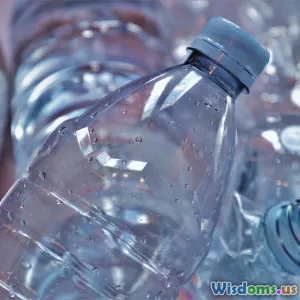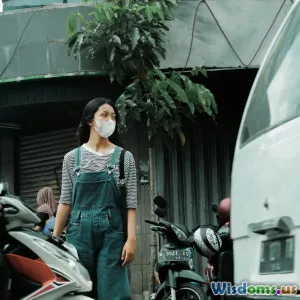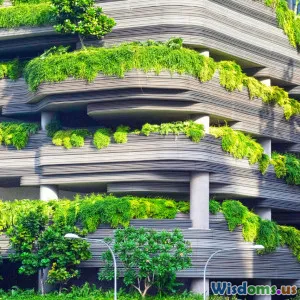
Five Green Building Practices That Save Water
9 min read Explore five innovative green building practices that dramatically reduce water usage and promote sustainable living in modern architecture. (0 Reviews)
Five Green Building Practices That Save Water
Water is one of our most precious resources, yet the global demand for it is soaring amid growing populations and climate change. Buildings consume a significant portion of freshwater worldwide—studies estimate commercial and residential use accounts for nearly 20% of total freshwater withdrawals globally. Green building practices that save water hold the power to transform this statistic, reducing environmental strain and enhancing resilience against droughts.
In this article, we delve into five crucial water-saving green building practices. We explore how these techniques work, their tangible benefits, and real-world examples illustrating their success.
1. Rainwater Harvesting: Turning Rain into a Resource
Rainwater harvesting is one of the simplest yet most effective water-saving strategies used in sustainable architecture. It involves collecting, storing, and using rainwater runoff from rooftops or other surfaces instead of relying solely on municipal water supplies.
How It Works
Roofs equipped with gutters channel rainwater into storage tanks or cisterns. This water can be filtered and utilized for irrigation, flushing toilets, or even treated for potable use.
Benefits
- Reduces dependency on groundwater: Conserves local water reserves during dry periods.
- Lowers stormwater runoff: Diminishes flooding risks and water pollution.
- Cost savings: Decreases water bills for occupants.
Real-World Example
The Bullitt Center in Seattle, often called the "greenest commercial building in the world," collects and treats rainwater to fulfill all its daily water needs. It stores up to 56,000 gallons, capturing rainfall efficiently in the Pacific Northwest’s rainy climate, proving that rainwater harvesting can support even complex facilities.
A U.S. Environmental Protection Agency (EPA) study suggests that rainwater harvesting can reduce potable water use in buildings by 30-60%, depending on size and water needs.
2. Greywater Recycling Systems: Reusing Water Smartly
Greywater is relatively clean wastewater from baths, sinks, and washing machines. Treating and reusing this water for non-potable purposes offers a significant water-saving opportunity.
What Is Greywater Recycling?
Specialized plumbing diverts greywater away from drains, treating it minimally onsite before redirecting for irrigation, toilet flushing, or laundry.
Implementations and Benefits
- Cuts down freshwater consumption dramatically: Up to 50% of household water can be non-potable greywater that is recycled.
- Reduces sewer load: Less wastewater sent to treatment plants saves energy and cost.
Example in Practice
The BedZED (Beddington Zero Energy Development) eco-village near London applies greywater recycling extensively on-site. It integrates it into a circular water system connecting greywater recycling ponds to garden irrigation and toilet flushing.
A 2009 study in the journal Water Science & Technology found that greywater recycling in homes reduces potable water demand significantly, sometimes saving thousands of liters per year.
3. Xeriscaping: Landscaping that Saves Water
Xeriscaping is a landscaping philosophy emphasizing drought-tolerant plants and water-efficient gardening practices.
Principles
- Use native or adapted plants requiring minimal irrigation.
- Employ mulch to reduce evaporation.
- Optimize soil quality to enable better water retention.
- Design zones with distinct watering needs to avoid excess.
Environmental Impact
By reducing or eliminating traditional lawn irrigation, xeriscaping cuts outdoor water use by 50-75% .
Real-World Application
In desert regions such as Phoenix, Arizona, xeriscape landscaping guidelines are promoted widely. Homes with xeriscaped yards reportedly reduce outdoor water consumption by over 200 gallons per week during summer, according to a report by the Arizona Municipal Water Users Association.
Beyond saving water, xeriscaping reduces maintenance and chemical use, promoting biodiversity by incorporating native plants beneficial to local pollinators.
4. Installing High-Efficiency Fixtures: Maximizing Every Drop
Household plumbing fixtures like toilets, faucets, and showerheads contribute heavily to water use.
Modern Solutions
- Low-flow faucets and showerheads reduce flow rates without sacrificing usability.
- High-efficiency toilets (HETs) use 20-60% less water per flush compared to standard toilets.
- Smart irrigation controllers adjust watering schedules based on weather, soil moisture, or plant requirements.
Data-Backed Effectiveness
EPA’s WaterSense certification program labels fixtures that meet rigorous water efficiency and performance criteria. According to EPA, replacing older toilets with WaterSense labeled models can save an average family of four over 13,000 gallons of water annually.
Example
The Omega Center for Sustainable Living in Rhinebeck, New York, integrates WaterSense fixtures extensively throughout its campus. It reports an estimated 60% water savings compared to traditional buildings.
5. Permeable Pavements: Recharging Groundwater Naturally
Impermeable surfaces drastically increase stormwater runoff, leading to water waste and pollution.
What Are Permeable Pavements?
These materials allow water to seep through the surface into the soil below, replenishing groundwater rather than letting it become runoff.
Benefits
- Improving groundwater recharge, relieving strain on drinking water sources.
- Reducing surface runoff, mitigating floods and reducing transportation of pollutants.
- Lowering heat islands due to water retention.
Case in Point
Philadelphia’s Green City, Clean Waters program has utilized permeable pavements on thousands of parking lots, sidewalks, and streets. The initiative cites an estimated reduction of over 6.5 billion gallons of stormwater runoff annually.
A study published in Journal of Environmental Management suggests these pavements reduce runoff volume by up to 90%, depending on design and local soil conditions.
Conclusion
Harnessing green building practices to save water is no longer optional—it's a necessity for sustainable development and ecological preservation. Technologies like rainwater harvesting and greywater recycling redefine water usage cycles within buildings. Landscaping approaches like xeriscaping align aesthetics with ecology, while high-efficiency fixtures and permeable pavements offer pragmatic solutions to conserve every drop and manage stormwater effectively.
The examples shared—from the pioneering Bullitt Center to xeriscaping innovations in Arizona and urban programs in Philadelphia—show these practices are scalable and impactful. Architects, builders, and homeowners must adopt and innovate on these practices to ensure buildings serve not only as shelter but as stewards of our vital water resources.
As climate patterns shift and water scarcity worsens in many regions, integrating these water-conserving designs into everyday building standards can help build a more resilient, sustainable future. Start small with efficient fixtures or landscaping choices—each action contributes to wider change.
Water is life—saving it with smart green building practices is an investment in the planet and future generations.
Rate the Post
User Reviews
Popular Posts



















